Effects of color spectrums on plant growth
15.3 years ago indoor growbox, LEDs, spectograph
I have written about the importance of lumens when growing indoors but the intensity of the light at specific wavelengths can be over even more important. NASA has done some significant research on the subject to determine the possibility of growing leafy vegetables on a trip to Mars using as little electricity as possible to get the most benefit out of every watt. In space any wasted energy (heat or light not used by plant growth needs to be severely limited.
It should not be a surprise that using LEDs is part of the solution they came up with since they use 20-30% of the energy of a comparable HPS (High Pressure Sodium) bulb which is considered very efficient given the lumen output per watt. The most interesting part of their findings was how specific red and blue wavelengths were imperative to the growth of plants and actually could sustain growth with just these limited wavelengths. Given the freezing temperatures and masses of snow on the ground the best use of this information for indoor gardening and specifically my $20 PC Grow Box. Understanding the wavelengths that your artificial lights creates can help you have increased plant growth and save on your electricity bill at the same time.
When evaluating which light you must consider wavelength and also the intensity of the light at that wavelength. A tool to do exactly this is a spectrograph, which you can purchase, make your own (this was a fun project with the kids), or just trust other peoples readings. I chose made my own, but am displaying results (led museum) since I would have to estimate the intensity based on the brightness of the spectrum created which would lack some accuracy.
Just to get some perspective, this is what how various light sources appear to a spectrograph:
| Sunlight | 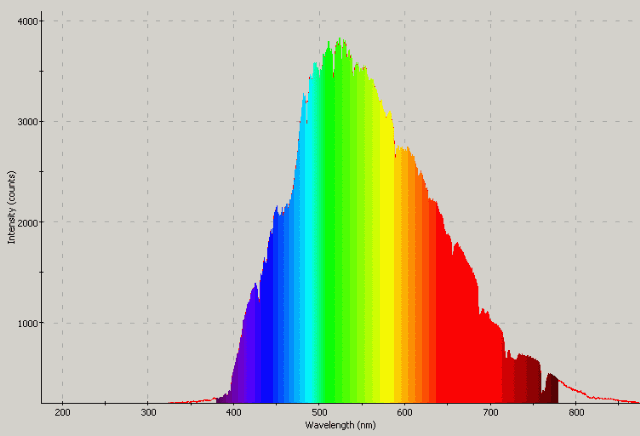 |
| Florescent Bulb | 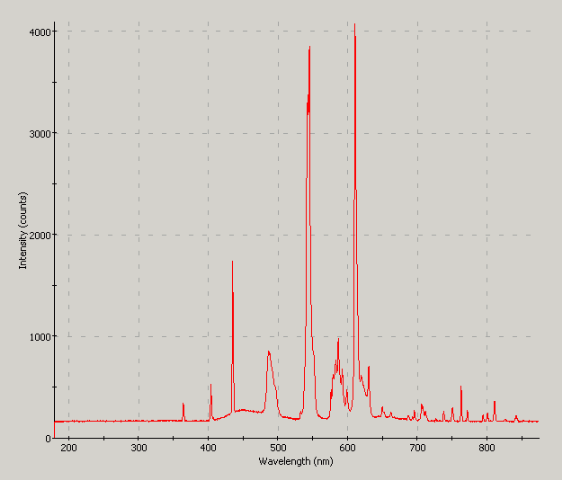 |
| Incandescent bulb | 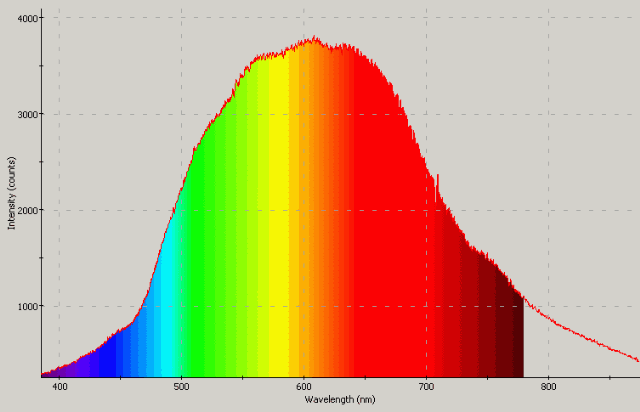 |
| Low power blue LED (5mm) | 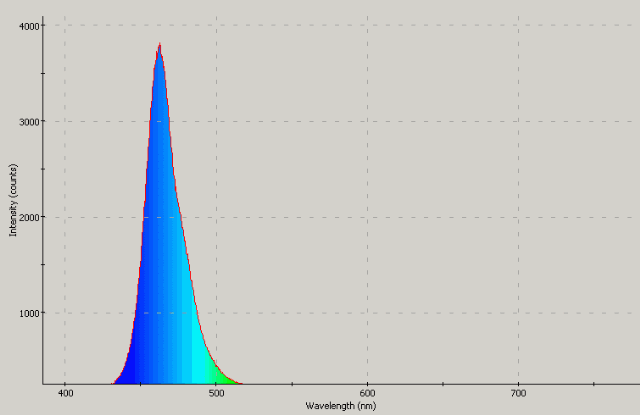 |
| Low power red LED (5mm) | 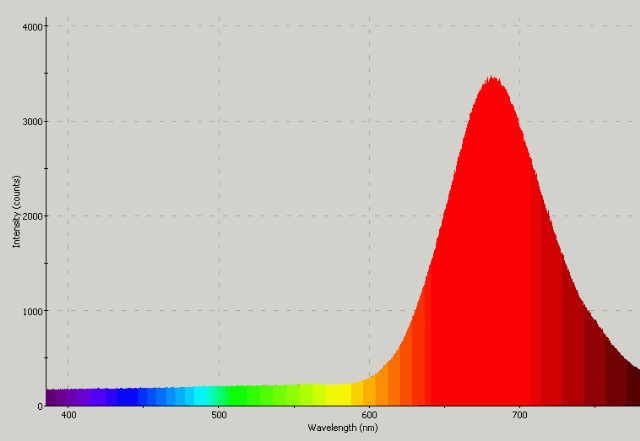 |
| Low power white LED | 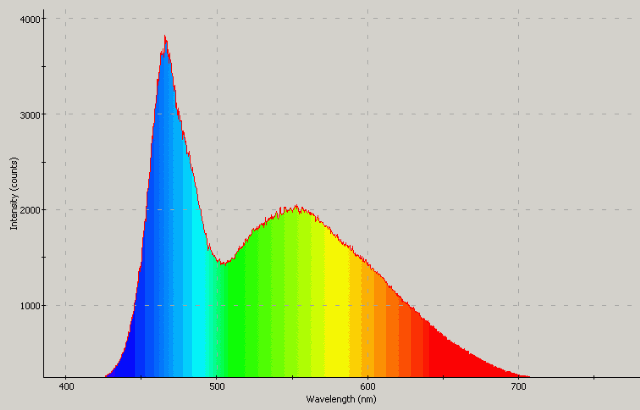 |
As you can see incandescent appears to be the closest to matching the wavelengths and intensities of sunlight though it we need to remember that the orange/yellow/green wavelengths provide essentially are wasted from the plant’s perspective due to natural reflection of these colors. So if a light looks bright to you, there is a good chance you are wasting electricity, as humans our eyes respond well to these wavelengths why we will find these bulbs to be much “brighter” from our perspective. The fluorescent bulb is a good example where we see this light as bright for plants other than the small slices spectrum much of the light is unusable. I have had good luck growing indoors with CFLs along with incandescent, but from the information above I my results cold have less spectacular if hadn’t included the incandescent bulb. At the time the only reason I used it was to generate a little extra heat on some of the cold nights.
The key point is I could easily have much better results using significantly less power. According to NASA’s research the most efficient configuration is to only have red/blue LEDs consisting primarily of red (80-85%) with the remaining (15-20%) being blue LEDs. I would recommend replacing the some of the of the blue LEDs with white LEDs to provide a full spectrum including a pretty intensive blue spectrum in itself. As an added bonus this will provide some “human” light in orange/yellow/green spectrum to allow us humans to view plants with less strain.
By replacing the two 24 watt CFL and one 80 watt incandescent bulb with a few hundred LEDs I could drop at least 124 watts with my new configuration. Assuming I am running my grow box every day for 14 hours a day this could save me over $45 a year as well as just being the more environmentally conscious thing to do.
So during these cold winter months if you grow indoors whether just for seedlings or vegetables all year round be sure to remember that not all indoor lights are created equal.
Tags: cheap, garden seeds, grow lights, growbox, led, outdoor plants, vegetables


